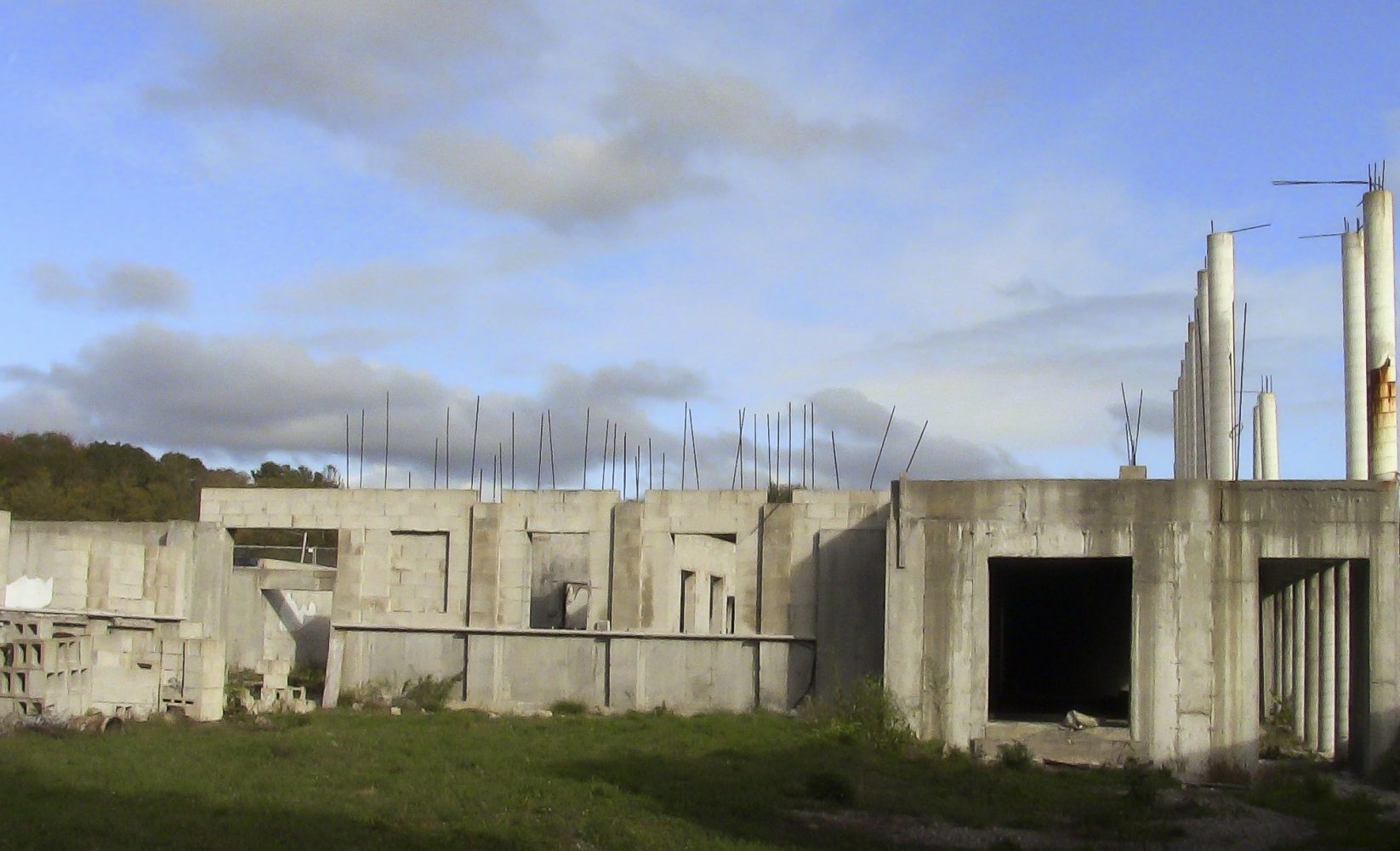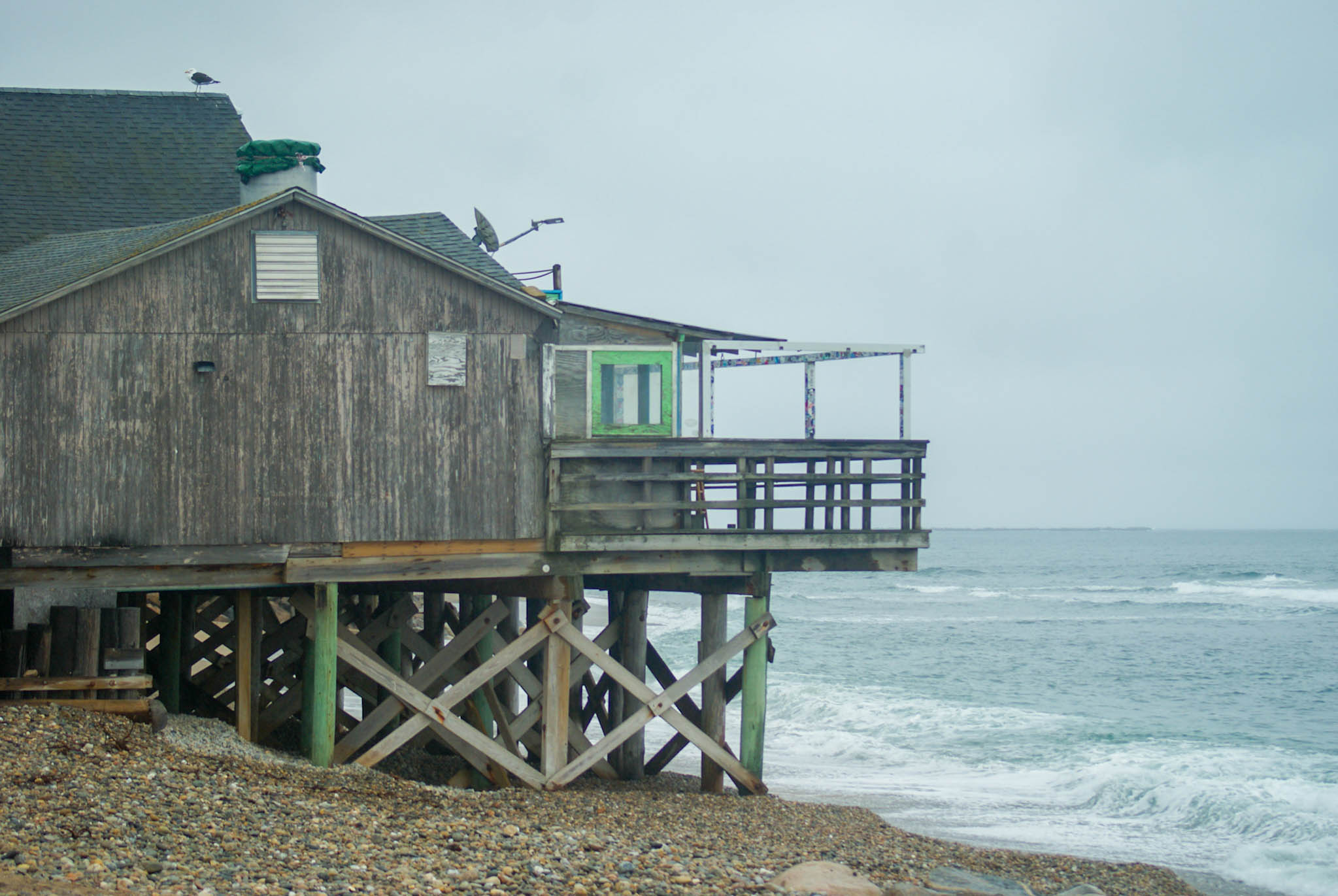The Fine Arts Center renovation and remodel was “at the top of the list of priorities for fiscal year 2017,” according to J. Vernon Wyman, the assistant vice president of Business Services, in an Cigar interview from November of 2015.
As many students and visitors can attest, there have been no renovations in the FAC. Upon entering the building, visitors are met with chipped cement, exposed rebar poking out from the sides of the building, lights flickering in the hallways, ceiling tiles littered with water damage – so thick in places that the white color has turned a stark black – relentless leaks, broken heating systems, exposed insulation and countless other issues that continually need maintenance.
In the meantime, the University of Rhode Island has broken ground on a multi-million dollar engineering complex just across the road from FAC on Upper College Road. This construction was funded in part by question four on Rhode Island’s 2016 down ballot election, granting the University $45.5 million in bonds. Funding for the $71.5 million FAC renovation was projected to be approved and voted on during this same election, according to a story from WPRI Channel 12 in December 2015.
After being teased with rendered images of a proposed project, said to be completed by 2020, many art students are upset with the facilities that they are forced to work in.
Daria Montaquila, theater major, said the conditions that she and other theater students work with make her feel like she’s in a dungeon.
“Our literal theater drips from the ceiling… our heating systems work sometimes… we just had a flood… we always have buckets around,” Montaquila said.
Chloe Zoglio, a double major in fine arts and English, said that she and other art students work in “a community that does what it can with what they’re given… I think that my professors do an amazing job considering the resources.”
In order to escape the uninspiring working conditions of the FAC, Zoglio prefers to undergo independent projects.
“I can work at home so I don’t need to work in this environment,” Zoglio said.
Jared Remson, a sophomore majoring in music, said that there is a charm that the FAC holds, in the way that it’s hideous and dying.
“It feels like [the University] doesn’t care what goes on,” Remson said. “It’s uninspiring and kind of lifeless.”
Fortunately, Christopher (Kip) McMahan, university architect and director of Campus Planning and Design, and others are working on the design for renovating and constructing the new FAC.
As of right now, the plans include phase one, which will renovate five of the 10-pod structure that makes up the FAC, and phase two, which will tear down the remaining five pods that are not salvageable and construct a new building in the middle. Most of the unsalvageable pods house the Department of Art and Art History.
“Our plan [in the first phases] is to… re-clad five of the pods that are to remain and basically stabilize the envelope [of the building],” said McMahan. Phase one also includes fixing the heating and ventilation systems throughout the building, and other renovation projects. Some of the pods that are included in phase one contain the pods that have fixed seating, the theater and music hall.
One idea that they are discussing right now is to put insulation around the outside of the building and cover that with brick. “That will help to make the building much more comfortable and insulated,” McMahan said.
The project is planned to go out to bid the summer of 2018 and construction will begin that summer. It is planned to take about a year for phase one to be completed.
McMahan said that the building is not condemned.
“There are some deficiencies in the building… but otherwise the buildings are habitable and are not in a position to be condemned.” Although, McMahan does state that the building can certainly stand to be improved. While some deficiencies in the buildings are not fixable with minor repairs, McMahan said that Maintenance and Repair are aware of the shortcomings of the building and are doing everything they can to fix those issues.
Funding for this large project is still being discussed and will have to be voted on by the state legislature. The total funding for this project that is being requested is $64.2 million on top of a fundraising goal of $4.5 million from private donors. For right now, they have been funded to design phase one of the project. According to McMahan, “We’re happy that we’ve gotten to this stage and the University has made an effort to see this project through… the senior leadership of the University has been concerned about this project for the time I’ve been here.”





